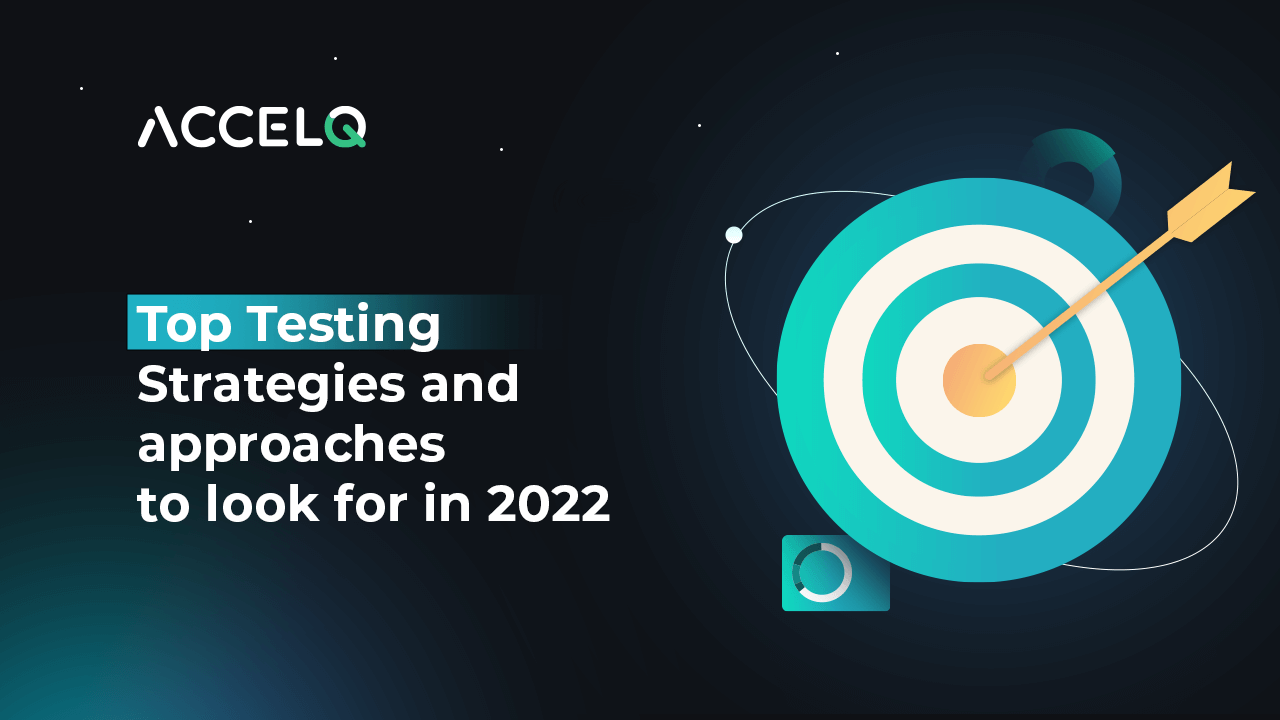
Testing in software engineering is becoming increasingly complex. It's causing teams to realize the need to build robust testing strategies to improve test efficiency and enhance software quality. Since proper testing ensures the highest quality standards, enterprise tech leaders must thoroughly understand the importance of testing strategies. They must be aware of the top testing strategies and approaches to adopt in 2025 and beyond.
The Importance of Testing Strategy in Software Testing

A test strategy provides a high-level guidance document that states the testing approach an organization must take. Building a solid testing strategy in software engineering allows teams to focus on the best practices and essential traits that must be evaluated according to organizational objectives.
Most importantly, the right testing strategy can help teams understand:
- Roles and responsibilities of different team members
- What type of testing to embrace for testing different features under different scenarios
- The tools to be used to ensure rigorous and continuous testing
- The best practices while configuring a test environment
- How to identify and mitigate risks in time
Top Testing Strategies in Software Engineering

When venturing into any software testing project, it is vital to have a clear idea of the most effective and commonly deployed software testing strategies. Such insights make it easy for teams to understand the prerequisites deeply. Furthermore, they help choose the tools and resources with the right level of technical skills and knowledge.
To that end, let's look at the top testing strategies in software engineering. And let's decide which one best suits the needs of your software under test:
1. Unit Testing
Any software must first be tested for its individual components to ensure they work perfectly in isolation. Developing a robust unit testing strategy can help assess specific aspects of the software under test and determine if each one is fully functional. Further, running unit tests anytime a piece of code is changed helps ensure issues are resolved as quickly as possible.
2. Structural Testing
Testing software for its underlying structure via white-box testing is crucial to verify and confirm its strength. Structural testing helps reveal possible errors and bugs in hidden code and spot dead code. As such, it requires testers to have a thorough knowledge of the software and the devices and systems it runs on.
3. Integration Testing
In addition to carrying out testing of individual components, it is also important for teams to develop a strong integration testing strategy. Such a strategy helps test how different components function when combined and uncover different issues that arise due to integration.
4. Behavioral Testing
Another testing strategy that needs to be adopted in today's era is behavioral testing. Testing the software for its workflows and configurations helps in evaluating how the software functions across different user profiles and under different usage scenarios.
5. System Testing
Building a strong system testing strategy is also critical to verifying how the complete application functions as a whole. Such testing helps in checking if the system complies with all the outlined requirements and meets necessary quality standards. The right system testing strategy ensures the software satisfies all the technical, functional, and business requirements set by the customer.
SUGGESTED READ - Test Strategy vs. Test Plan Key Differences
Factors To Consider While Choosing Testing Strategies
A test strategy is a long-term document that guides teams across multiple projects. Since test strategy preparation takes place at an organizational level, it must set the foundation for every project for teams to build individual test plans on top of it.
Here are a few factors to consider while choosing testing strategies for your organization:
- Understand the objective of the software under development and build a test strategy accordingly.
- Take inputs from project managers, product owners, and other tech and business leaders in the enterprise.
- While it is essential to factor in the requirements of different stakeholders, find the right balance to make sure you stick to your budget and timelines.
- Stay updated with the latest regulations and incorporate requirements to ensure compliance.
- Be wary of all the risks that might emerge during the testing lifecycle and disrupt the functioning of the software.
- Plan for appropriate remediation measures to minimize the risk of the software crashing or user experience getting affected.
Ready to Get Started?
Let our team experts walk you through how ACCELQ can assist you in achieving a true continuous testing automation
How ACCELQ Can Help Build the Right Software Testing Strategy
ACCELQ can help organizations achieve maximum ROI from their test initiatives. We can conduct a detailed assessment of your testing requirements, conduct gap analysis, and craft a testing strategy that perfectly aligns with the needs of your business.
By preparing and executing a testing roadmap that follows your unique test plan while at the same time adhering to the organizational test strategy, we can enhance the ROI from your testing efforts.
Here's how we do it!
- We incorporate end-to-end automation testing to help streamline testing efforts without bias.
- Our end-to-end test automation platform empowers your teams to seamlessly manage all their testing activities – using a single tool and with zero-coding.
As the only cloud-based continuous testing platform, we can help automate web, mobile, API, and desktop testing without writing a single line of code. With automation integrated across the entire toolset, ACCELQ makes it possible for Agile teams to manage the entire QA automation lifecycle effectively.
In essence, we help accelerate your testing by adopting the lifecycle automation approach that spans test design, planning, test generation, and execution.
Set the Right Foundation for Comprehensive Testing
If you want your product to meet quality standards and comply with business and user requirements, you need to take the right approach to testing in software engineering. A software test strategy acts as a foundation for defining end-to-end testing practices. Therefore, it is crucial to be aware of the top testing strategies in software development.
Since multiple projects can leverage a test strategy based on unique test plans, your test strategy needs to be customizable and reusable. This way, it can meet the different requirements and objectives of different projects. Make sure the testing strategy you choose for your business is developed by senior executives while taking inputs from different stakeholders.
At ACCELQ, we understand the importance of testing strategy in software testing. Learn how you can use our codeless, AI-powered test automation tool on the cloud to build the right software test strategy for your business and enable end-to-end business assurance. Contact us today!
Geosley Andrades
Director, Product Evangelist at ACCELQ
Geosley is a Test Automation Evangelist and Community builder at ACCELQ. Being passionate about continuous learning, Geosley helps ACCELQ with innovative solutions to transform test automation to be simpler, more reliable, and sustainable for the real world.
Related Posts
 Ad Hoc Testing Planning: Best Practices for Effective Test Execution
Ad Hoc Testing Planning: Best Practices for Effective Test Execution
Ad Hoc Testing Planning: Best Practices for Effective Test Execution
 Software Testing Trends to Look Out For in 2026
Software Testing Trends to Look Out For in 2026



































